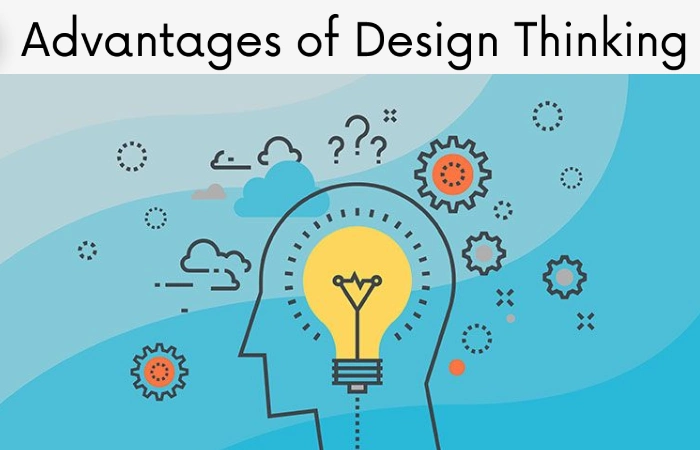Introduction
Many people believe that the design thinking method is solely applicable to the design industry; nevertheless, research reveals that design thinking is a relevant and beneficial approach for innovation across all sectors, benefiting businesses, employees, and customers equally. Many businesses have had considerable success due to implementing the design thinking methodology. You can apply design thinking to any industry because of its ability to innovate, focus on servicing consumers and bring value to products and services.
The design thinking process is divided into stages. According to the Journal of Strategic Innovation and Sustainability, the focus on deep user comprehension is the most important part of the design thinking approach. This feature helps businesses gain comprehensive user insights and identify their latent demands, resulting in innovation and creativity. Design thinking combines what is desired from a human standpoint with what is technologically and economically achievable.
What is Design Thinking?
Design thinking is a model which allows you to address problems in novel ways. Design thinking, in particular, is an approach to innovation that is centred on the human being. It helps teams strike a careful balance between what makes sense to end-users, what is technologically achievable, and what is viable for a business to pursue. It is also characterized as encouraging businesses to focus on the people for whom they produce, resulting in improved goods, services, and internal procedures.
Design Thinking Application
Design thinking is being used in a wide range of professions. And also, design thinking is extensively employed by experts worldwide, from sports, education, and research to business, management, and design.
Design thinking falls between analytical and intuitive thinking. Analytical thinking is characterized by strictly deductive reasoning and inductive logical reasoning, which rely on quantitative approaches to reach results. However, intuitive thinking means understanding something without recourse to logic.
Business
Design thinking benefits firms by streamlining the processes of product development, marketing, and contract renewal. These procedures necessitate a company-wide emphasis on the client, and hence design thinking is extremely beneficial in these processes. Design thinking enables designers to develop deep empathy for their customers and create solutions that precisely meet their needs. The solutions are not provided solely for technological reasons. If your business wants to use the design thinking technique, you must obtain design thinking courses online and refine your skills.
Information Technology
The IT sector produces many items that need trials and proof of concept. Instead of just deploying technologies, the sector must sympathize with its people. IT is about more than just technology or goods; it is also about procedures. The developers, analysts, consultants, and managers must brainstorm potential solutions to the clients’ concerns. This is when design thinking comes in handy.
Education
The education sector can make excellent use of design thinking by soliciting student feedback on their needs, goals, and challenges in the classroom. Working with their comments, the teachers can devise solutions to their problems.
For example, Riva, a second-grade teacher, noticed that lowering the bulletin boards would make his kids more comfortable. He also liked the concept of establishing a pleasant semi-private room for working students to study in. As a result, his kids were more involved and felt more liberated to move.
Healthcare
Design thinking is also beneficial in healthcare. The government’s investment in healthcare and the expense of healthcare facilities is increasing by the day. Experts worldwide are worried about providing people with high-quality healthcare at a cheap cost.
Venice Family Clinic in Venice, California, has devised novel approaches to the difficulty of establishing a low-cost children’s clinic to assist low-income families. Funding, transportation, and language barriers all have to be addressed, and all of this has to be done at a cheap cost to disadvantaged children. Fostering excellent health with earnings was a difficulty since it does not appear to be sustainable. They solved the system’s inadequacies and periodic problems through design thinking.
What Are the Advantages of Design Thinking?

Design thinking is one of the most important techniques that firms can use, and it contributes to creating a better product while also engaging both the producer and the client.
Let’s look at why this skill is so useful now.
Fills a Specific Need
Many firms innovate only for the sake of innovating. Rather than improving on current products, they launch new ones. Furthermore, they neglect to consider what the buyer is genuinely seeking.
The design thinking technique guarantees that a specific demand or problem is addressed. Design thinkers solve problems that need to be fixed by recognizing them.
Attempts to Solve Difficult Problems
Design thinking is sought-after expertise because it addresses challenging issues. Clients sometimes do not understand why they dislike a product or what adjustments may improve it.
Design thinkers may tackle these difficulties logically and analytically through observation and iteration. As a result, even the most unclear situations may be broken down into smaller pieces for clarity.
Provides Innovative Solutions
It frequently feels that every wonderful idea has already been taken and every fantastic solution has already been implemented. Using design thinking, business owners and other creatives may break out of this mold. They can forge new ideas that others have not yet considered, and the end outcome is unique, imaginative, and inventive.
Savings on Expenses
Getting positive feedback from consumers boosts sales through word-of-mouth. Furthermore, design thinking enables items to reach the market faster and less recall. Firms may save a lot of money if they do this.
Improves Efficiency
The more iterations a concept goes through, the more probable it is to attain perfection. Using several prototypes and testing situations improves a solution’s efficiency.
You may also use it across the firm and for other teams. Cross-collaboration aids in the improvement of communication and efficiency. It is no surprise that so many mega-corporations rely on this skill.
Conclusion
Design Thinking provides a set of problem-solving, innovation-focused activities and methods that you may utilize to solve larger issues. One of the most often discussed successes of design thinking for social innovation has been its application to social innovation. Its implementation can lead to real-world solutions that improve results for companies and the people they serve without question. Check out the stanford design thinking course at Great learning. This can help you encounter a career breakthrough in the roles of Design Thinking.
Also Read: The Reasons why Companies Require a Digital Workspace


